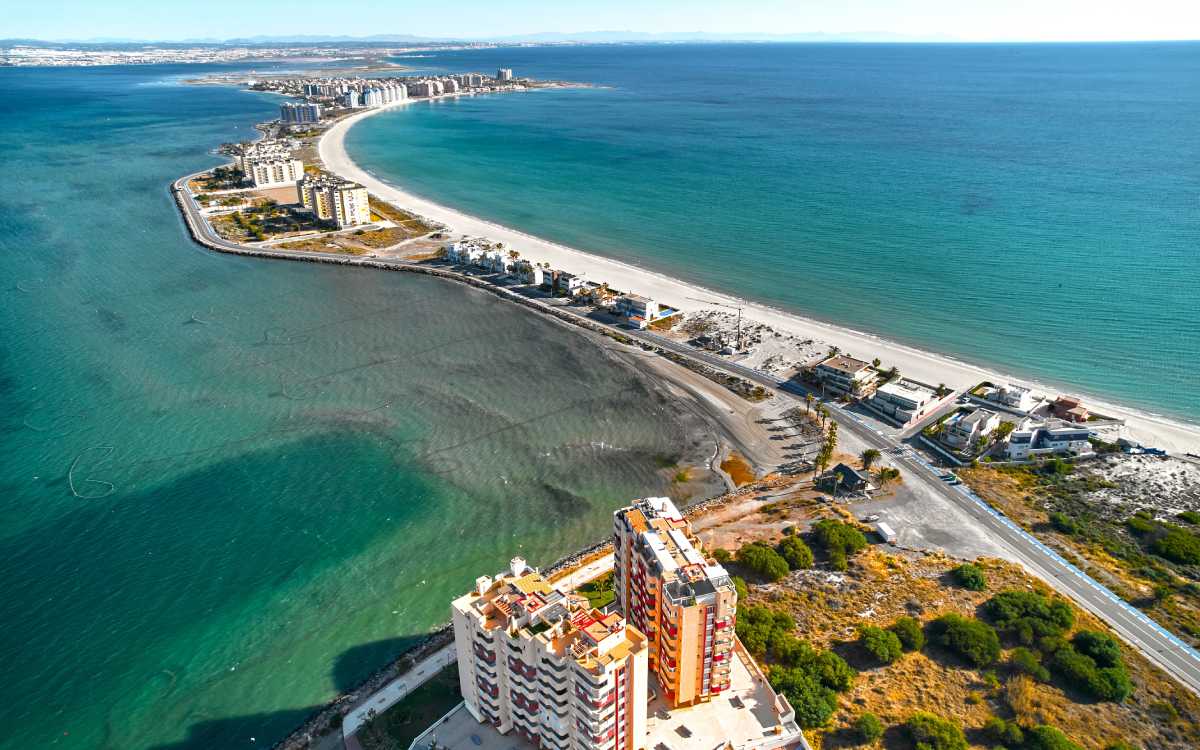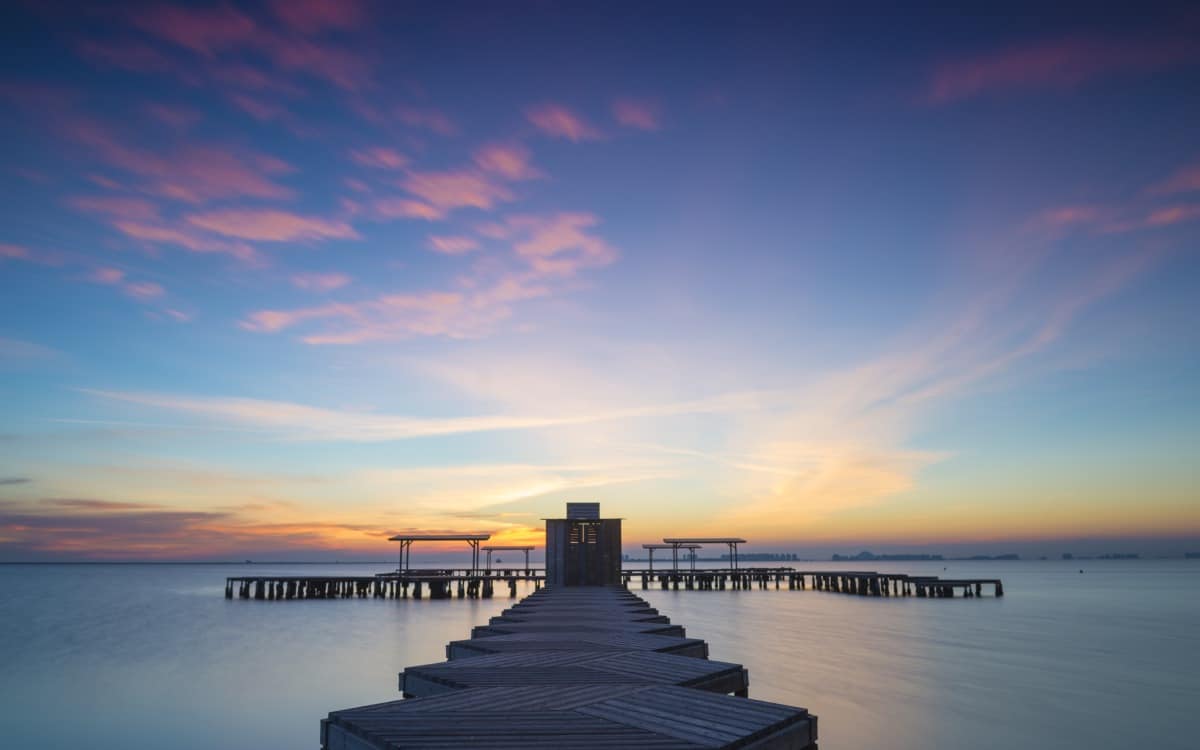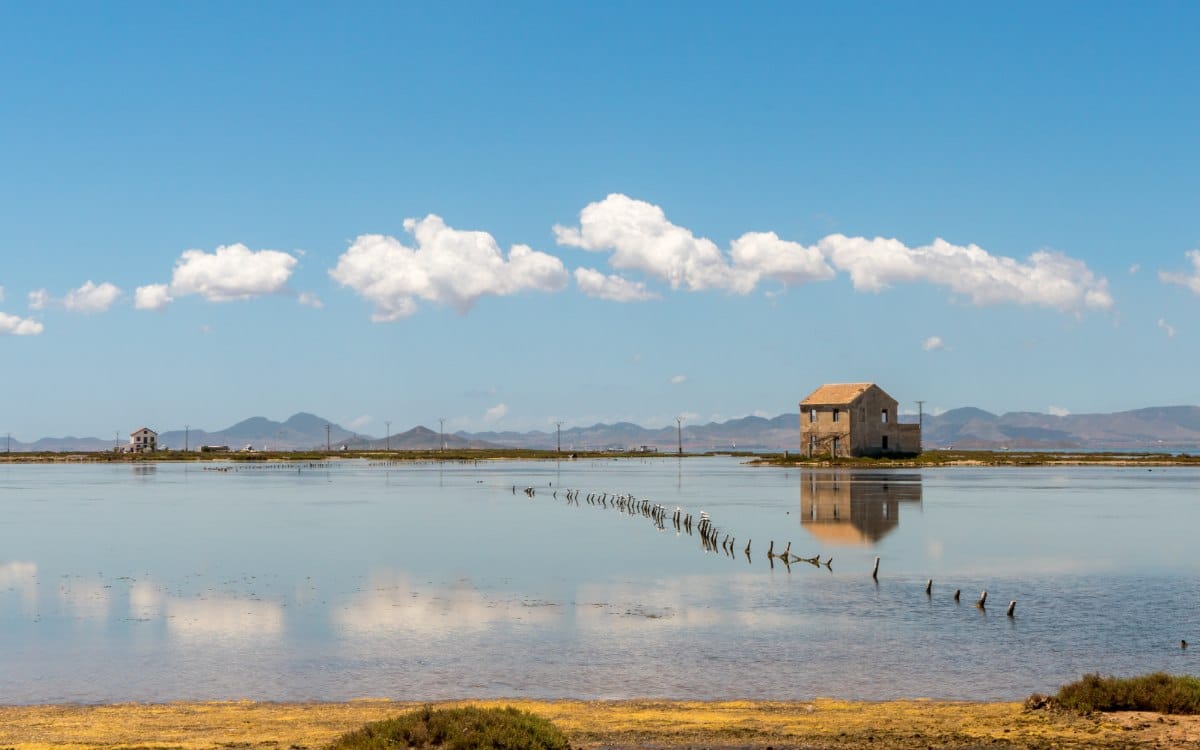
A wide, semicircular lagoon lies in the heart of the Mediterranean, like a sea in a sea or in the land, because there’s more than meets the eye. 135 square kilometres of salt water that don’t belong exactly to the sea but aren’t part of the land either. A space between two worlds that has been a tourist gem on the Spanish coast for many decades.

La Manga del Mar Menor. | Shutterstock
We are talking about Mar Menor, one of Europe’s geographical wonders and the largest of its type. It is actually an albufera, since it isn’t completely isolated from the sea as a coastal lagoon would do but joins it through water channels known as golas. This orchard has always been home to a wide number of species and has charmed many generations of people with its beaches and landscapes.
A sandspit of 22 kilometres, La Manga del Mar Menor, separates this unique ecosystem from the sea. Countless shallow beaches expand along the coast, whose waters were completely crystal-clear until recently. These waters have shown the harm of the uncontrolled exploitation of its treasures, with dramatic episodes that set alarm bells ringing. The diverse existing forms of protection for the Mar Menor, which focus on its rich fauna and its fragile balance, didn’t stop these events from occurring.

Sunrise at Mar Menor. | Shutterstock
The impressive charms of this magical corner include salt evaporation ponds, sandbanks, open spaces, and even volcanic islands. This place is the permanent or temporary home of a wide variety of animal species, which can be extremely stunning, such as pink flamingos. The ecosystem is that of coastal lagoons, with silty or sandy seabeds that are essential for plenty of tiny creatures, such as seahorses and the indigenous fish of the area of Levante, the fartet.
The most interesting natural spaces in the area are La Hita, with small wetlands, and the old volcano of El Carmolí. These corners are covered by a dense green mantle that becomes an incredible view in the spring. Here you can find the interesting Mediterranean dwarf palm and many aromatic herbs.

Mar Menor. | Shutterstock
In total, 13 population centres are splattered along the lagoon, from La Manga in Cartagena to El Mojón, its frontier with Alicante. The accommodation offer is wide and diverse, but most of them are in La Manga. Although most tourists come here looking for the sunny beaches, there are many other things to do here. The water sports offer is excellent—sailing, kite surfing, canoeing, and scuba diving are a powerful active tourism option to enjoy this privileged environment.
However, Mar Menor is a good place to find tranquillity too. Besides its gorgeous beaches, such as Cala del Pino, Villananitos, or Las Salinas, it has thermal spas and baths, and thalassotherapy that use the curative properties of salt water and silt. The remarkable sunsets are the perfect ending to the day. But you shouldn’t go to bed before trying the delicious local gastronomy, composed of fish and seafood and other traditional Murcian dishes like the zarangollo or the caldero.

Isla Grosa. | Shutterstoc
It is possible to dive into this breathtaking place by sea or by land, if they aren’t the same thing here. Many spots to learn about the Mar Menor can be found on the coast, such as its museums. The Museo Aeronáutico sits in what used to be the first Spanish seaplane base. The place’s history is exhibited in the local museums of San Javier and San Pedro del Pinatar through fossils and old toys.
Sailing is the other way to reveal this area’s soul. You have many possibilities, like visiting the calm Isla Grosa by boat or joining those who best know the Mar Menor: its sailors.
Back on land, you’ll find many paths to explore by hiking, bicycle touring, or riding a horse. Take the opportunity to come closer to the two lighthouses or to visit the inspiring Cape Palos. Near the area also sit other wonders, such as Jardines del Malecón in the capital city of Murcia and the impressive Roman legacy of Cartagena.